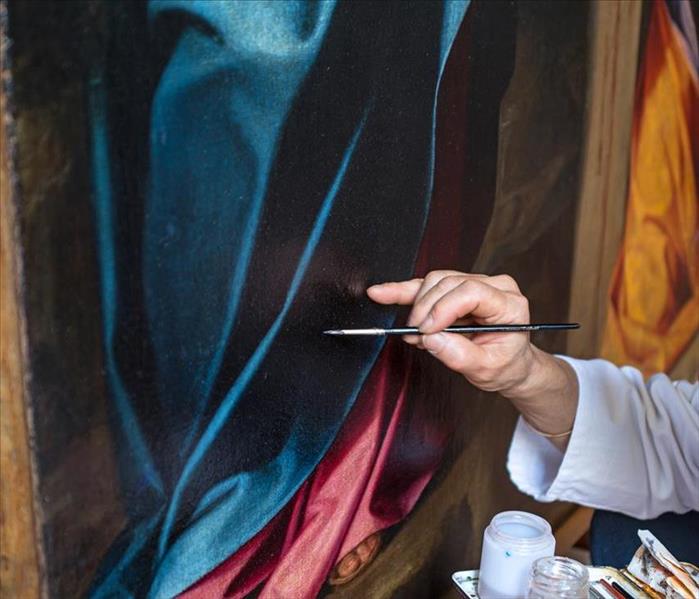How To Remove Mold From Paintings
6/17/2021 (Permalink)
How To Remove Mold From Art Work
Mold cleaning is typically reserved for large projects such as building infrastructure and furniture rehab, complicated endeavors which are best handled by residential mold remediation services. When it comes to personal items such as paintings, the task can often be handled independently. Here's how to remove mold from your favorite works of art hanging in Cal Poly University-Pomona, CA.
1. Know Your Painting
The materials that constitute your painting determine how it should be treated. Oils are highly durable, although they sometimes react badly to chemicals. Acrylics can be damaged when they get wet. Watercolors are among the trickiest to clean because of their water-soluble nature.
2. Clean Your Frame
Remove the frame to reduce moisture and slow further mold damage. Create a mold cleaning solution by mixing bleach with water or use another appropriate household option. Before scrubbing away, apply your cleaner conservatively to see if it removes the finish.
3. Clean Your Painting
Learn as much as you can about mold remediation, as mistakes can ruin works of art forever. Lightly mist the back of the painting with rubbing alcohol or Lysol to stop further fungal growth. Treating the front is more painstaking. Small groupings of mold can be gotten rid of by applying a cotton swab dampened with alcohol and water. Work slowly and stop if you notice your efforts harming the image. A light bristled brush is ideal for getting rid of dried mold. Have a HEPA-filtered vacuum by your side to immediately eliminate floating mold particles.
4. Dry Your Painting
Place your artwork in sunlight until it's completely dried. Set paintings outside if possible, where breezes can contribute to moisture removal. Exercise caution if there is the potential for rain. Whether inside or outside, place your art on a flat surface such as a towel or board.
After completing the de-molding process, your painting is ready to be rehung. With some well-informed mold cleaning techniques, your most precious artwork can be saved.





 24/7 Emergency Service
24/7 Emergency Service
